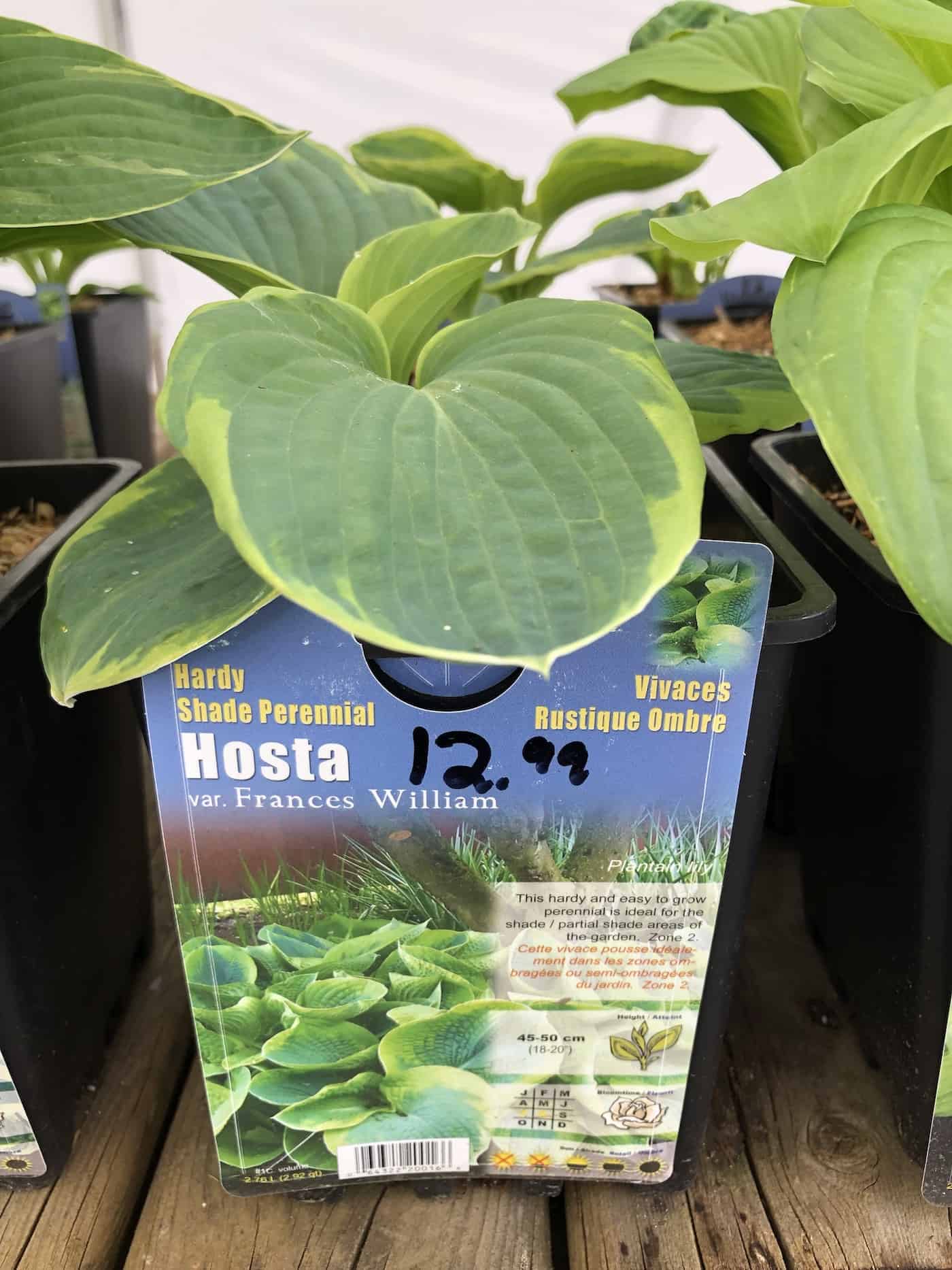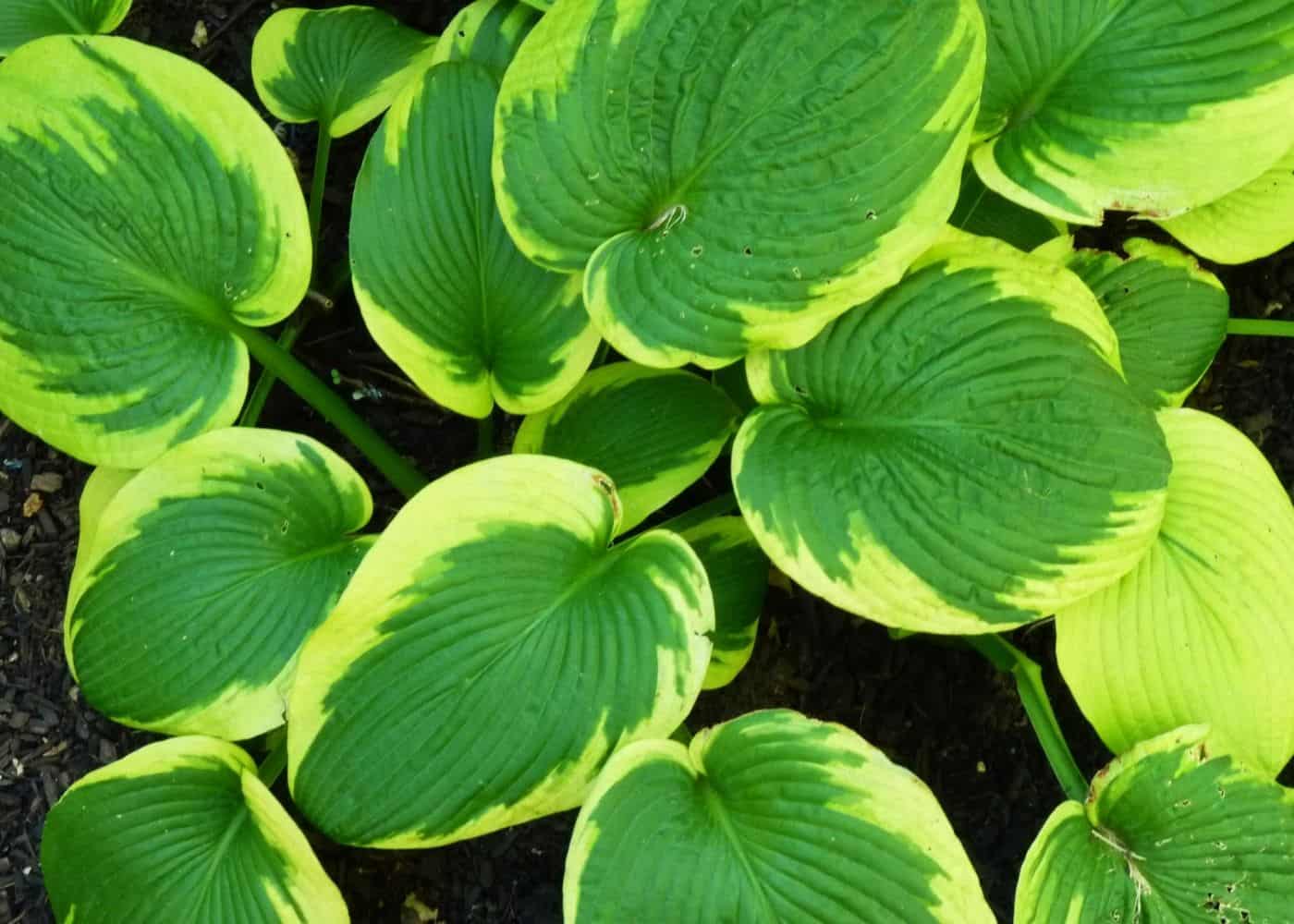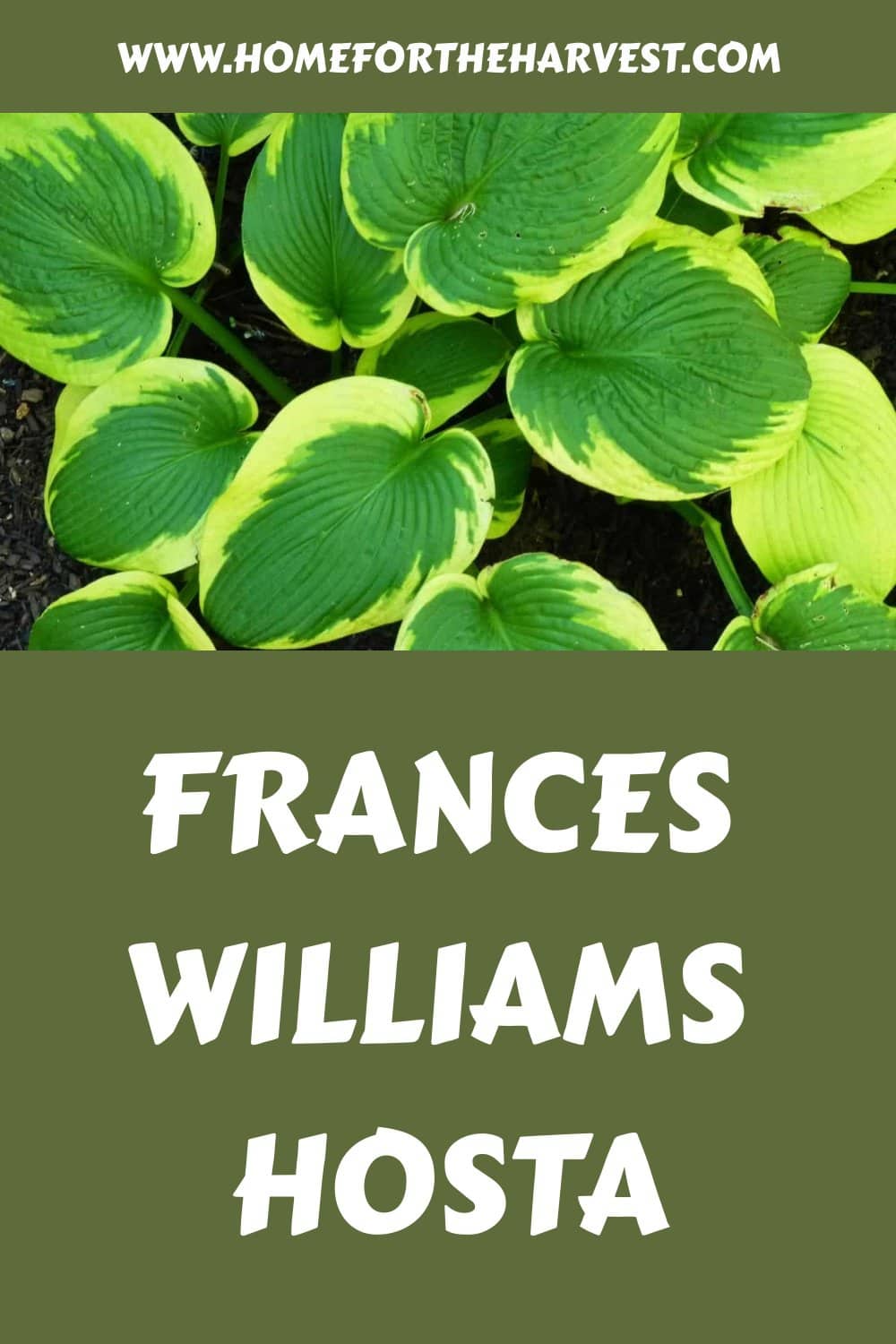The Frances Williams hosta is a popular medium-sized variegated hosta cultivar. It has blue-green leaves with wide, chartreuse to yellow margins that become wider as the plant matures. The white flowers are bell-shaped and bloom in midsummer on slender stems above the foliage. The Frances Williams hosta can reach a height of 22 inches and a width of 3-4 feet. This plant is relatively easy to care for and is tolerant of a wide range of soils.
Frances Williams hosta basics
The Frances Williams hosta, sometimes spelled Francis William hosta, is a shade-loving perennial that’s perfect for adding interest to shady areas of the garden. This plant is a sport of the popular hosta ‘Elegans’ registered by F. & C. Williams in 1986 and has large, dark green-blue leaves with cream-yellow margins. In midsummer, tall spikes of pale lavender flowers appear.
Hostas are very easy to grow and care for. They’re tolerant of a wide range of growing conditions, including both sun and shade. These plants prefer moist, well-drained soil and will go dormant in the winter. Hostas are also easy to plant and generally quite affordable.

How to plant Frances Williams hosta
When planting Frances Williams Hosta, choose a location that receives partial to full shade. This plant prefers moist, well-drained soil. Choosing a location with good air circulation is also essential to prevent the leaves from getting too humid. Frances Williams Hosta plants are hardy in zones 3-9.
The Frances Williams Hosta tends to grow about 22″ tall and up to 4′ wide once plants are well established in the soil. Be sure to give them enough space to spread out as they are one of the larger hosta varieties.
The best time of year to plant hostas is in the early fall or in the early-mid spring. This plant prefers moist, well-drained soil, so it’s important to wait until the ground is thawed and there is no danger of a hard frost before planting.
Dig a wide shallow planting hole for the hosta. The hole should be about twice as wide as the planter but no deeper. Remove the pot and place the plant in the planting hole so that the soil around the plant is level with the soil around the hole. When planting Frances Williams Hosta from a dormant bulb/bare-root, the roots should be planted about 2 inches deep in the soil. Here are some more tips for how to plant hostas.
Watering requirements
Newly planted Frances Williams hostas need to be watered frequently to help the roots get established in the soil. Water the hosta at least once a week unless it has been rainy. In warm weather, you may have to water more frequently (especially if the hosta receives partial sun).
Established hosta plants are relatively drought-tolerant when grown out of direct sunlight and only need to be watered when the soil is dry to the touch. During the hottest months of summer, you may need to water your plant twice a week. In general, it’s better to underwater hostas than to overwater them.
The best watering method for hostas is to water deeply and then allow the soil to dry out before watering again. This is easiest with drip irrigation. This plant prefers moist, well-drained soil, so it’s important not to overwater if the plant is growing in poorly-drained clay soil.
Fertilizing Frances Williams hosta
Frances Williams hosta plants prefer a well-balanced fertilizer. The best time to fertilize is in the early spring, just as new growth begins to emerge. You can also fertilize again in mid-summer for plants that look particularly lush. Slow-release organic fertilizers are easy to use and provide a broad spectrum of macro and micronutrients.
Pruning hostas
Pruning hostas is limited to removing damaged/diseased leaves during the growing season and then cutting back the whole plant to ground level after the first fall frost. Read more about when to cut back hostas.
Companion plants for Frances Williams hosta
Some good companion plants for Frances Williams hosta include:
- Lungwort (Pulmonaria)
- Bleeding Heart (Dicentra)
- Ferns
- Jack In The Pulpit (Arisaema)
- Japanese Forest Grass (Hakonechloa macra)
Pests affecting Frances Williams hosta
There are a few pests that can affect Frances Williams Hosta plants, but the most common are slugs and snails. These pests are attracted to the moisture in the leaves and can cause damage by eating holes in them. The best way to control these pests is to handpick them off of the plant and dispose of them. You can also try using bait such as iron phosphate or beer traps.
Diseases affecting Frances Williams hosta
The most common disease affecting Frances Williams Hosta plants is powdery mildew. This fungal disease appears as a white powdery growth on the leaves and can cause the leaves to turn yellow and wilt. The best way to control powdery mildew is to water the plants at ground level rather than from above (such as with drip irrigation) and to remove any affected leaves from the plant. You can also try using an organic fungicide designed for powdery mildew.







